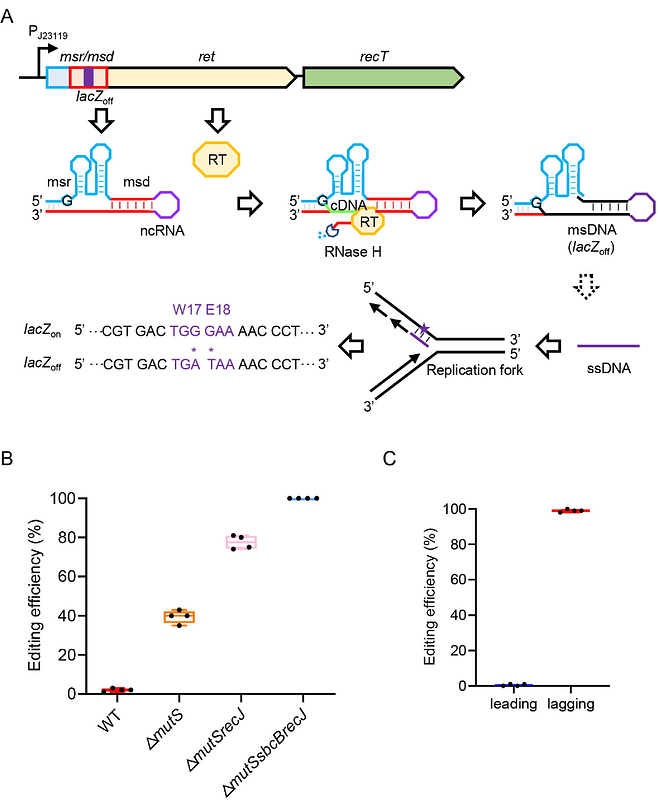Reducing competition between msd and genomic DNA significantly improved the editing efficiency of the retron editing system

Reducing competition between msd and genomic DNA significantly improved the editing efficiency of the retron editing system
Ni, Y.; Wang, Y.; Shi, X.; Ruan, Q.; Na, T.; He, J.; Wang, X.
AbstractA retron is a distinct system encoding reverse transcriptase and a unique single-stranded DNA/RNA hybrid called multicopy single-stranded DNA (msDNA). The ability of msDNA to serve as a homologous recombination donor for gene editing has attracted great interest. However, the mechanism by which msDNA expression affects editing efficiency remains unclear. In this study, we show that an increase in msd number increased msDNA yield but was not necessarily accompanied by an increase in editing efficiency. Mechanistic studies indicate that msd and genomic regions competed for msDNA during recombination. As the number of msd increased, the amount of msDNA allocated to the genomic targets decreased, resulting in a decrease in editing efficiency. Finally, we reduced msd editing by expressing msDNA corresponding to the plasmid replication leading strand sequence, thus constructing a retron-based gene editing system that achieved 100% editing efficiency in the shortest time reported to date. The above results reveal a completely different features between retron-based gene editing system and oligonucleotide-mediated gene editing system and will provide theoretical guidance for the design and application of the retron system.


